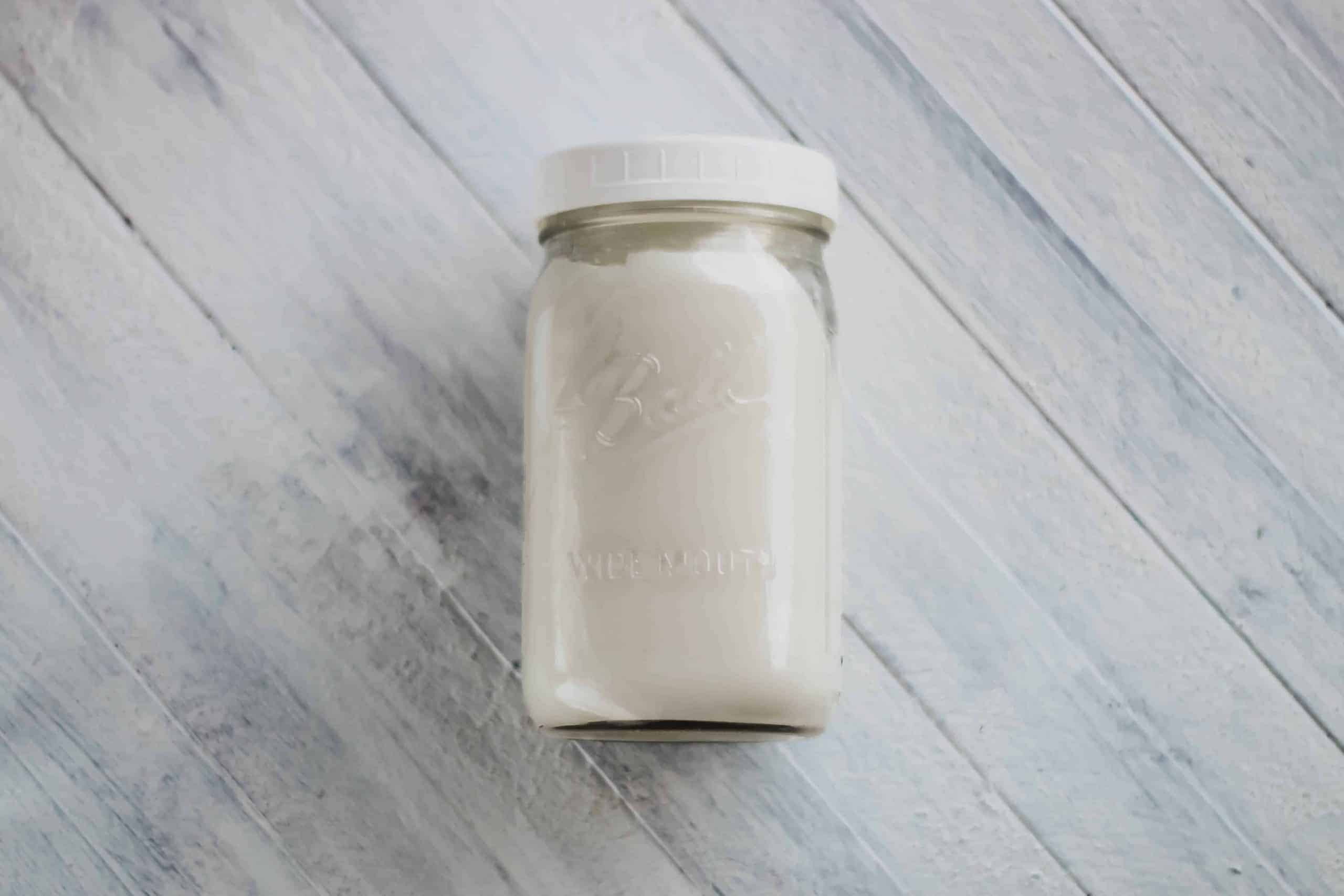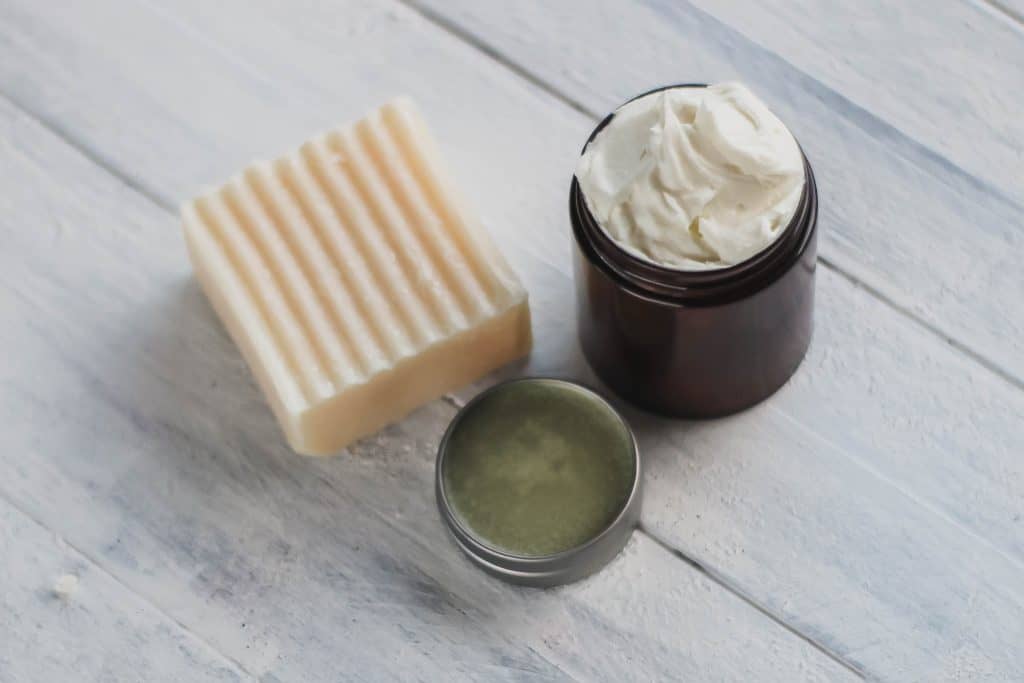This is the ultimate guide to rendering the best tallow ever. Nutrient dense, versatile… tallow is amazing stuff. This is my method for how to render and purify tallow so that it is odorless and white.
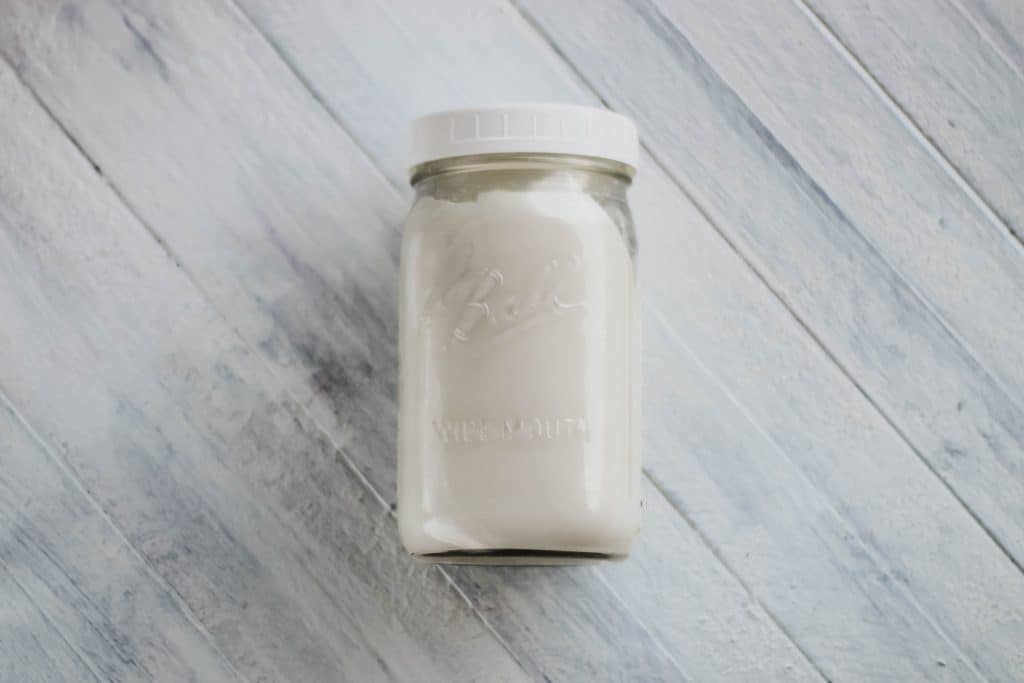
How to render and purify tallow
This is the wet rendering method for making tallow, with some extra purification steps. It is the best method for how to render and purify tallow for soap, tallow balm, or candles. Or you can cook with it! It turns out so beautifully. Tallow balm made with tallow rendered using this method has no beef smell at all.
What I really like about this method is that it isn’t technically a refining process. None of the nutrients or beneficial properties of the tallow are altered, as they would be in refined and deodorized tallow that is available commercially. You get the best of both worlds: gorgeous, white, odorless tallow, with all the great benefits.
I have another really popular blog post on how to render tallow in a crockpot here. That method is the dry method for how to render fat. It’s good for when you want to know what to do with beef fat trimmings, and is a quick, very easy way to render some tallow for cooking.
That dry method does tend to leave behind a bit of a beef aroma in the finished tallow, but that can be just fine if you’re only cooking with it. This method I’m about to show you is perfect for when you want odorless, white tallow.
Pin it for Later
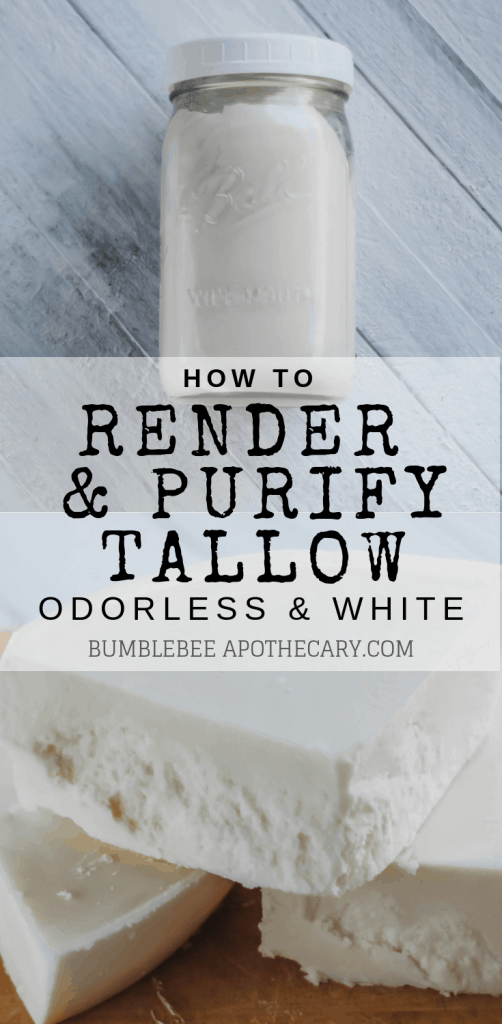
This post contains affiliate links, which means I make a small commission at no extra cost to you. Get my full disclosure here.
What is beef tallow?
Beef tallow is rendered beef fat. Render just means to cook fat down so that it is melted. At room temperature tallow is solid, and it melts to a liquid when you heat it.
Tallow is something that our ancestors used and treasured. It is hard to find something that is as versatile and nutrient dense as tallow.
Tallow can also refer to rendered fat from other ruminant animals, like sheep.
Beef tallow benefits
Beef tallow is one of the healthiest fats there is, whether you use it in cooking or for skincare.
When you cook with tallow, it adds rich nutrients, has a high smoke point, and wonderful flavor. For skincare, tallow provides a wide abundance nutrients that are highly beneficial for skin. I talk all about beef tallow benefits here, and about tallow skin care here. Get my tallow lotion bar recipe here.
For a while, healthy animal fats like tallow and lard became less popular. That’s because vegetable oils were pushed as being healthier options… which isn’t true (source)!
Vegetable oils are unstable at higher temperatures, and oxidize, which releases free radicals. Beef tallow is stable at high temperatures and tastes so much better than any highly processed, industrialized vegetable/seed oil.
Tallow, especially when it comes from grass fed cattle, contains so many beneficial nutrients (source). Grass fed beef tallow is:
- abundant in conjugated linoleic acid (CLA) which has powerful anti-inflammatory properties
- rich in minerals
- full of fall soluble vitamins A, D, E, K, and B12 (source)
Tallow is definitely part of a Nourishing Traditions diet. Sally Fallon has this to say about tallow:
Suet and tallow are very stable fats and can be used for frying. Traditional cultures valued these fats for their health benefits. They are a good source of antimicrobial palmitoleic acid. –Nourishing Traditions, page 19
And did I mention how delicious tallow is? It seriously makes the best French fries you’ve ever had.
Beef fat uses
One of the things I love so much about tallow is how versatile it is. I cover the entire list of all the many beef tallow uses in this post here.
Here’s a summary of some great beef tallow uses:
- Cooking, whether sautéing, frying, or baking
- Candles
- Soap
- Balm for skin care, scrubs, salves, lip balm, and more
- Deep conditioning for hair
- Protecting and conditioning leather and wood
- Lubricating machinery
- Waterproofing
I also have lots of different tallow recipes on my blog. I’ve actually been named the Tallow Queen by my awesome YouTube channel subscribers 🙂 Here at Bumblebee Apothecary, you’ll find all kinds of ways to use the tallow you make!
Where to buy beef fat to render into tallow
When you look for beef fat to render, you’ll want to look for fat from 100% grass fed, grass finished cattle. That will give you the highest nutrient content in the finished tallow.
Also, the leaf fat from around the internal organs and kidneys is the most desirable fat compared to trim fat. Leaf fat is the purest, will render the cleanest, and contains the most beneficial nutrients.
In another blog post, which you can read here, I talk all about where to find the best places to buy beef fat. Craigslist and your local Weston A. Price chapter are great places to look.
If you want to buy some high quality, already rendered tallow from organic, 100% grass fed beef, this is a high quality one you can buy online.
Getting ready to make tallow
There are basically two parts to this process: the rendering step, where I’ll show you how to make beef tallow, and the purifying process, which is what makes it odorless and white.
You’ll want your beef fat to be ground, or at least cut up into small chunks. If possible, ask your butcher to grind the beef fat for you. It will render more quickly that way.
If getting it ground isn’t possible, you can cut it up into small pieces. It’s easiest to do this if the tallow is cold. You can also try grinding it with a food processor.
I will say this: I’ve rendered a LOT of tallow in my lifetime, and I’ve tried all the methods there are, including cutting it up with a knife, grinding it in a food processor, and grinding with a Kitchenaid mixer attachment. None of those methods are my favorite for getting small fat pieces. They’re all very messy and labor intensive.
Here’s the best way I’ve found to deal with big chunks of tallow that the butcher didn’t grind for you: Put the big pieces of fat into the crockpot with the salt and water (as explained below) and let the fat get nice and soft for a few hours.
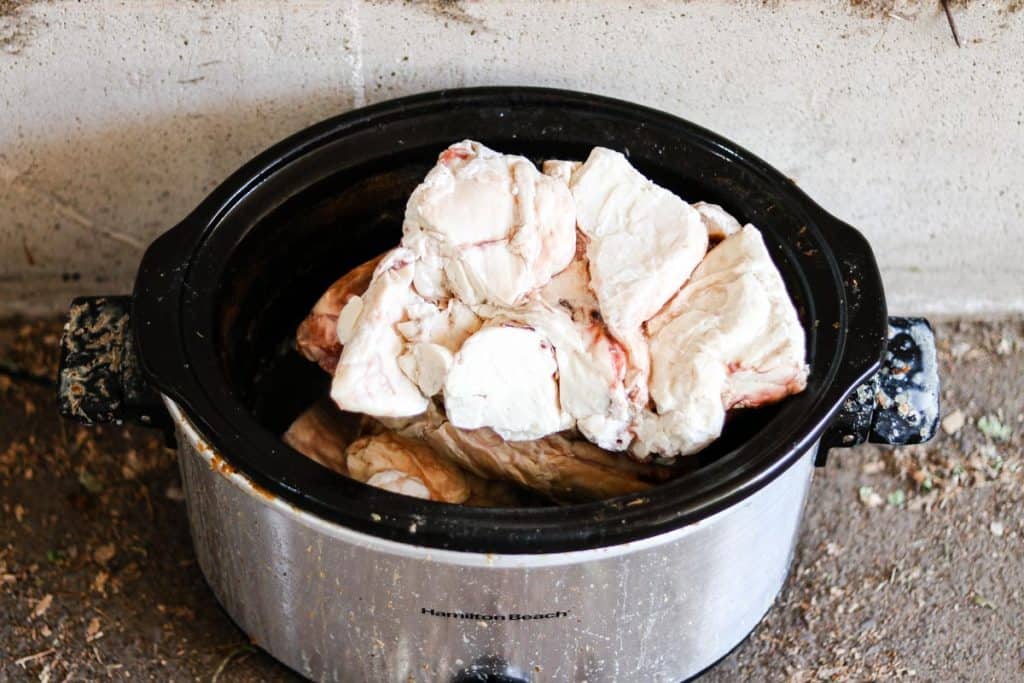
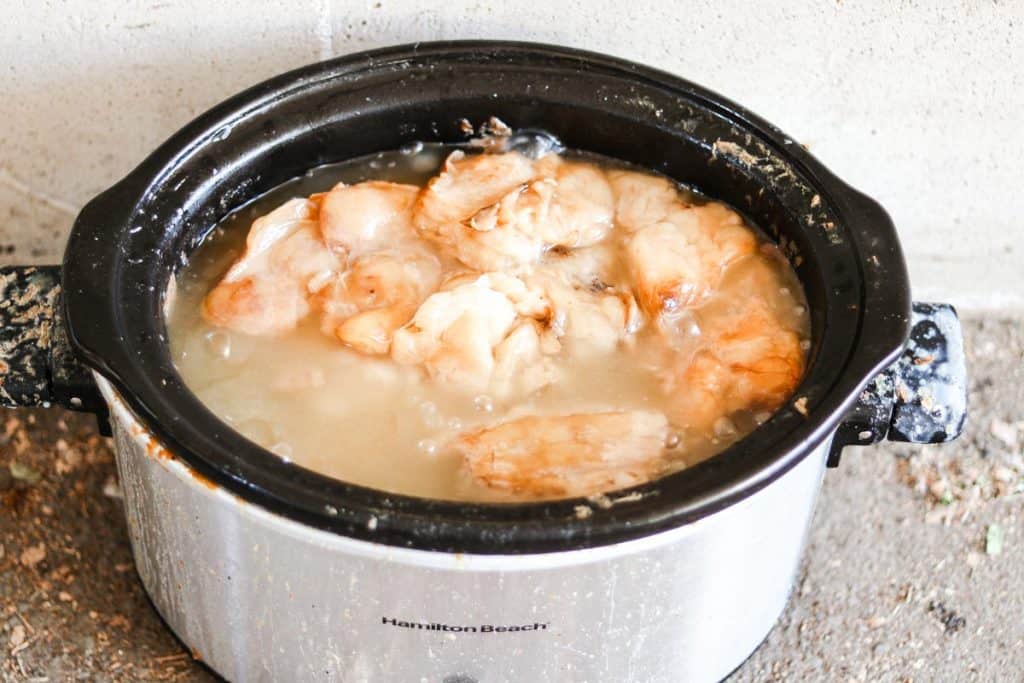
Next, whizz up the soft fat with an immersion blender until you have a soupy mixture.
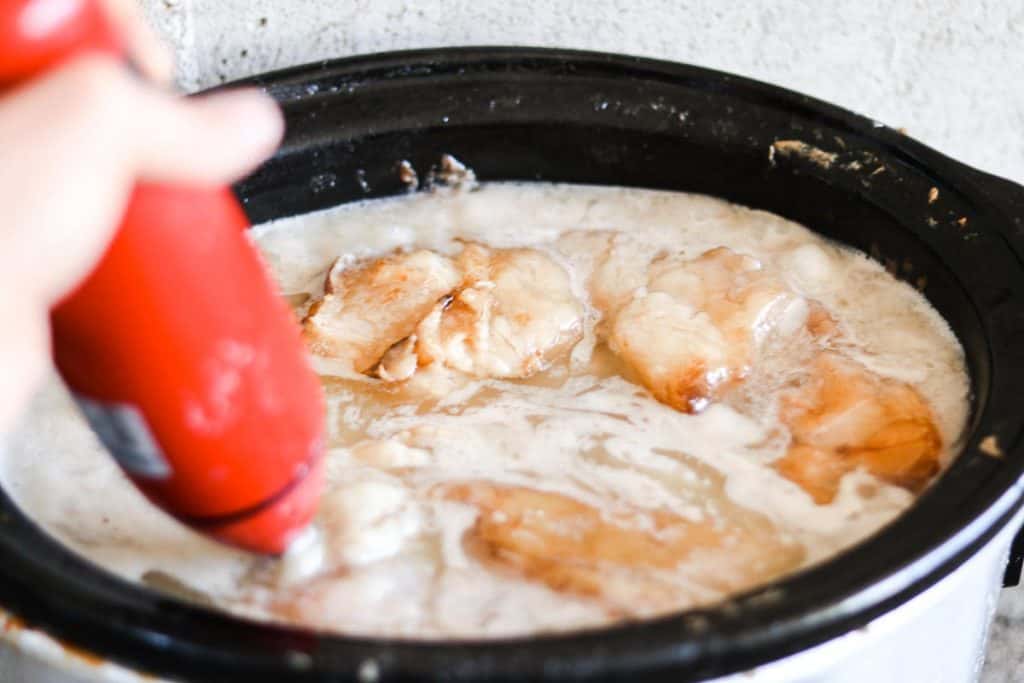
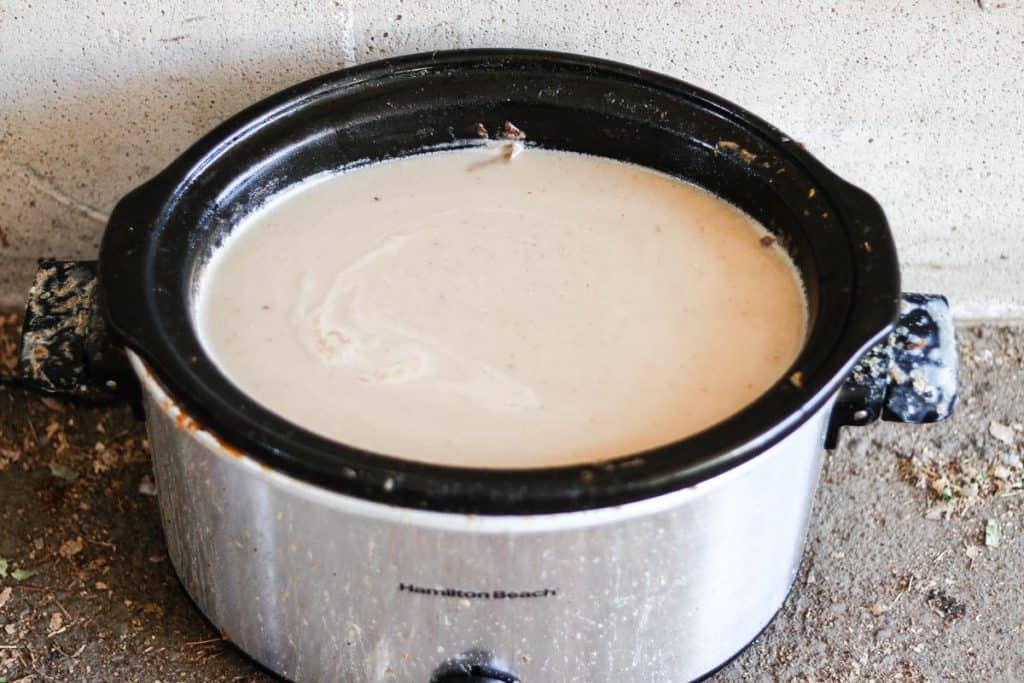
Then just finished the rendering process by following the directions below.
How to render tallow
For rendering, you just toss your raw beef fat (also known as beef suet) into the crockpot, and add some salt, and plenty of water. For my big, 10 quart crockpot, I use around 3 TBSP or so of salt and around 6-8 cups of water. You can adjust these amounts depending on how much fat you’re rendering.
Next, turn the crockpot to low. Over the next several hours, you’ll see the beef fat melt into tallow. It’s a good idea to stir the tallow a few times throughout the rendering process, so that the heat can get to it all as evenly as possible.
Once all of the tallow is rendered, you’ll see any gristly parts sink to the bottom, and all of the fat will have melted into golden tallow. The time it takes to render depends on how big or small your chunks of tallow are. You know it’s done rendering when you can’t see any pieces raw fat left.
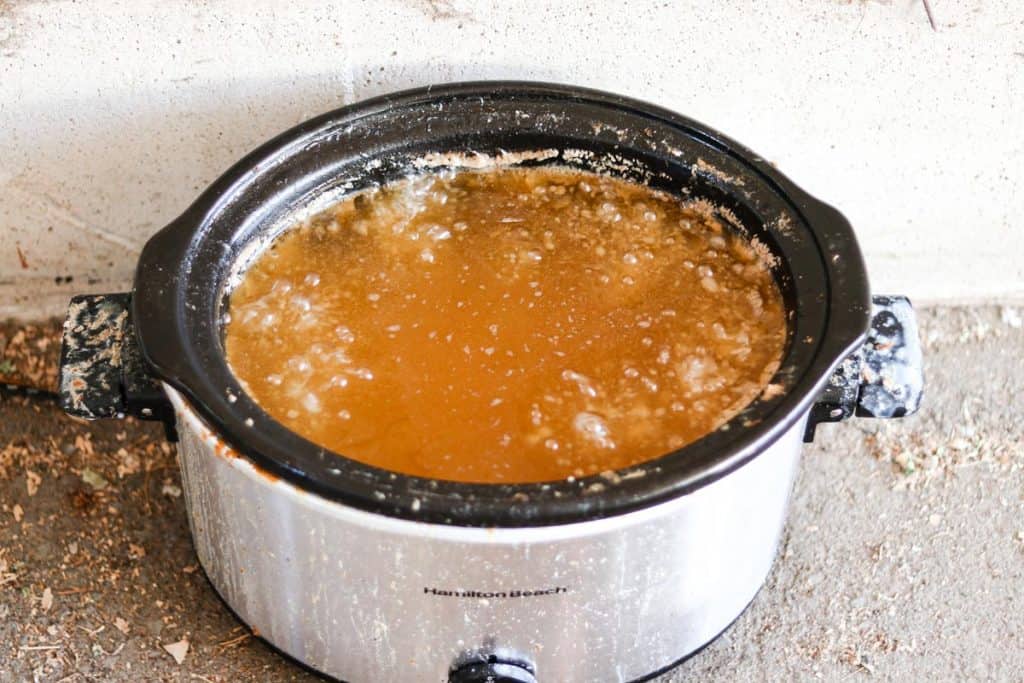
Once the rendering is finished, it’s time to strain. I like to strain my tallow through a metal strainer. You’ll be straining out the solid gristle chunks, discarding them, and keeping the tallow and water together in a clean container.
Keep in mind what type of container you’re straining into. You want something that the finished, hardened tallow can easily pop out of. I like a big metal mixing bowl.
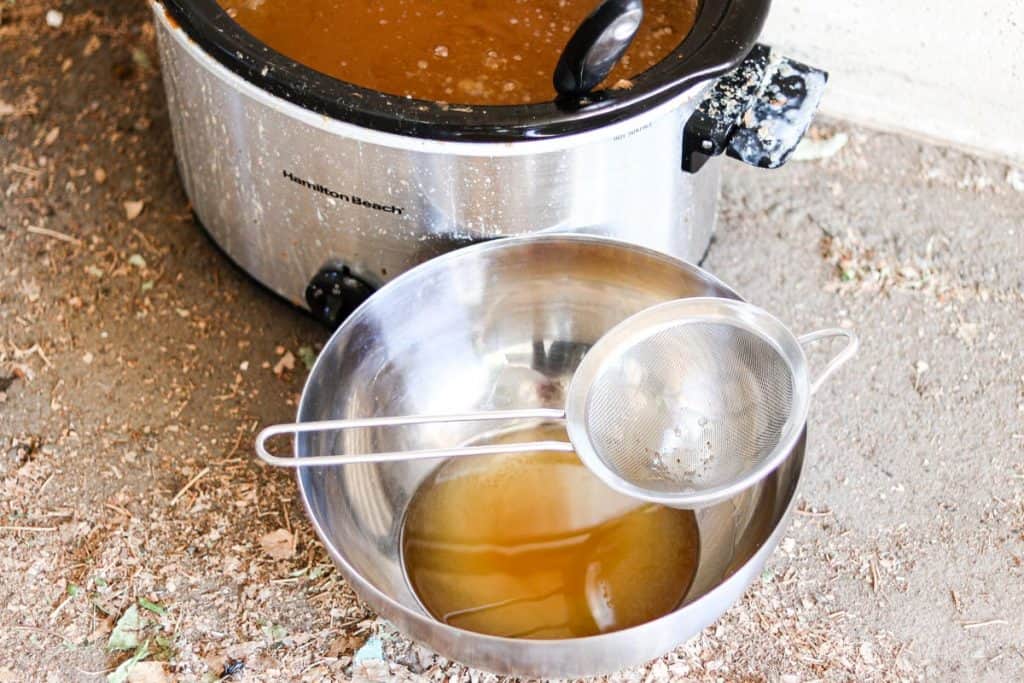
Once all of the tallow and water is strained, put it in a cool place so that the tallow can harden.
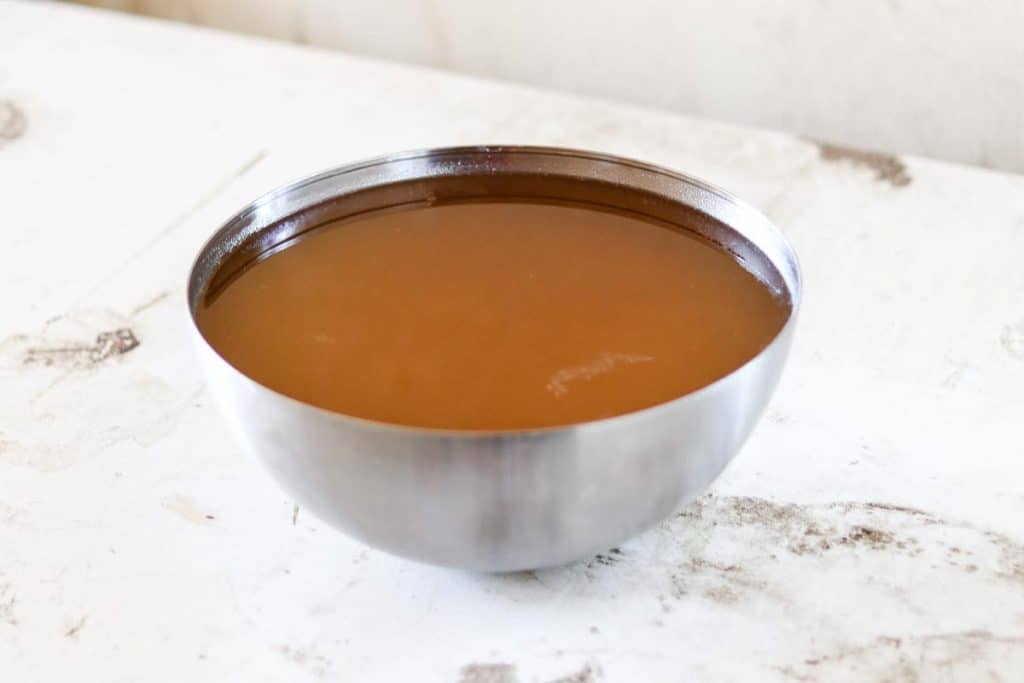
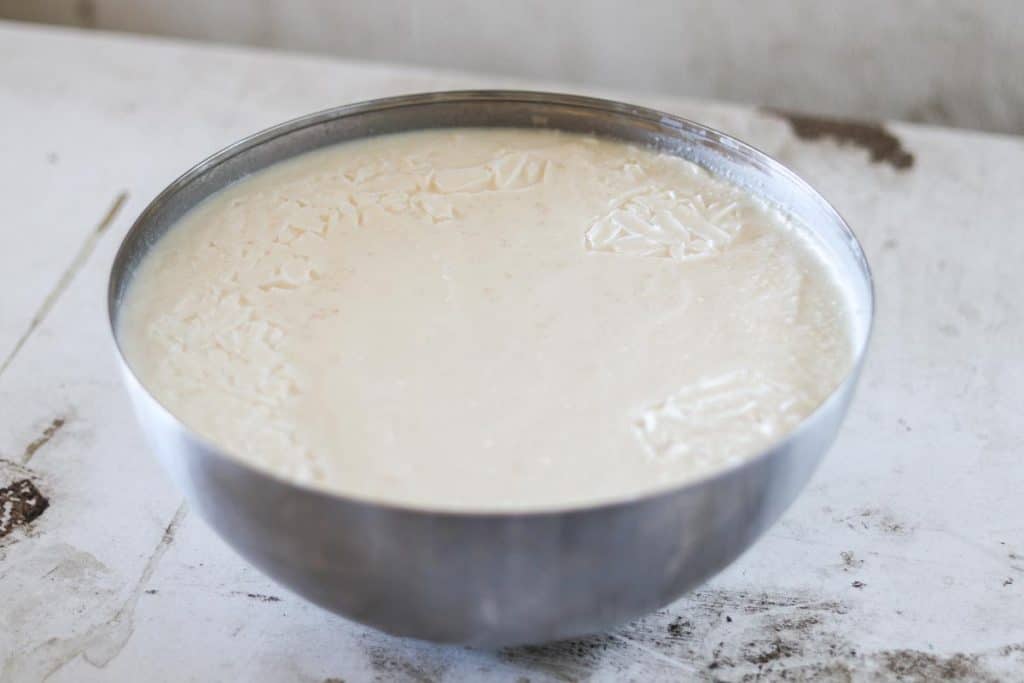
While the tallow is cooling, wash the crockpot so that it’s ready for the next step.
How to purify tallow
Once the tallow has hardened, just pop the firm tallow cake out of the bowl. The water will stay behind. It is probably quite brown, and maybe even gelatinous.

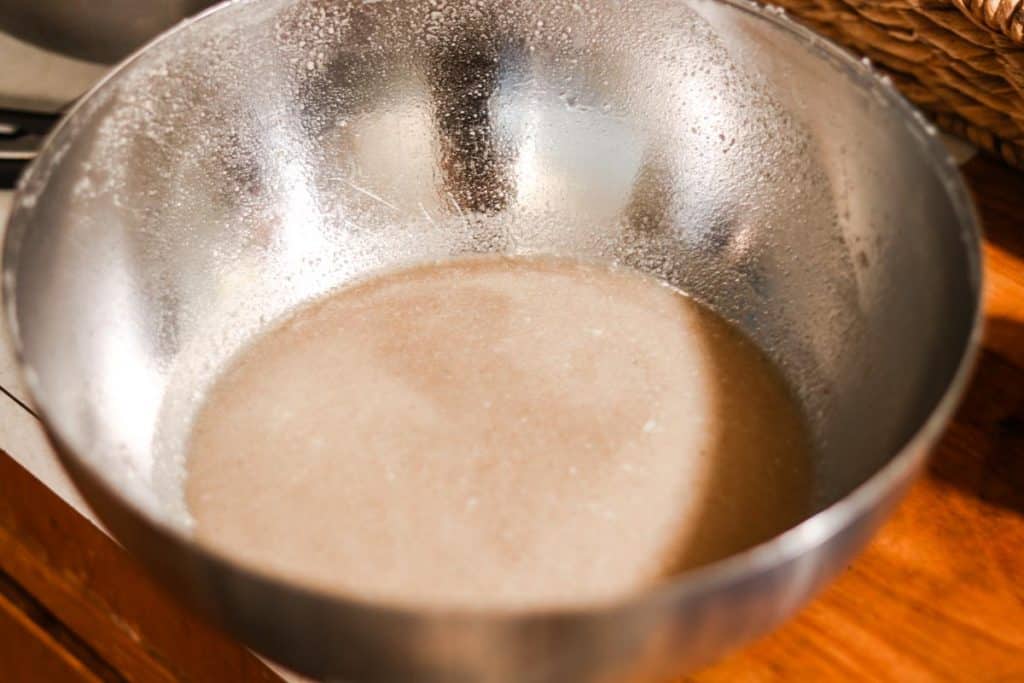
Notice the bottom of the tallow cake. It will have brownish sediment on the bottom. These are the impurities that the salt has pulled out of the tallow. Those impurities make the tallow softer and and to have a beef smell. Scrape the brown places off so that you’re left with only white tallow.
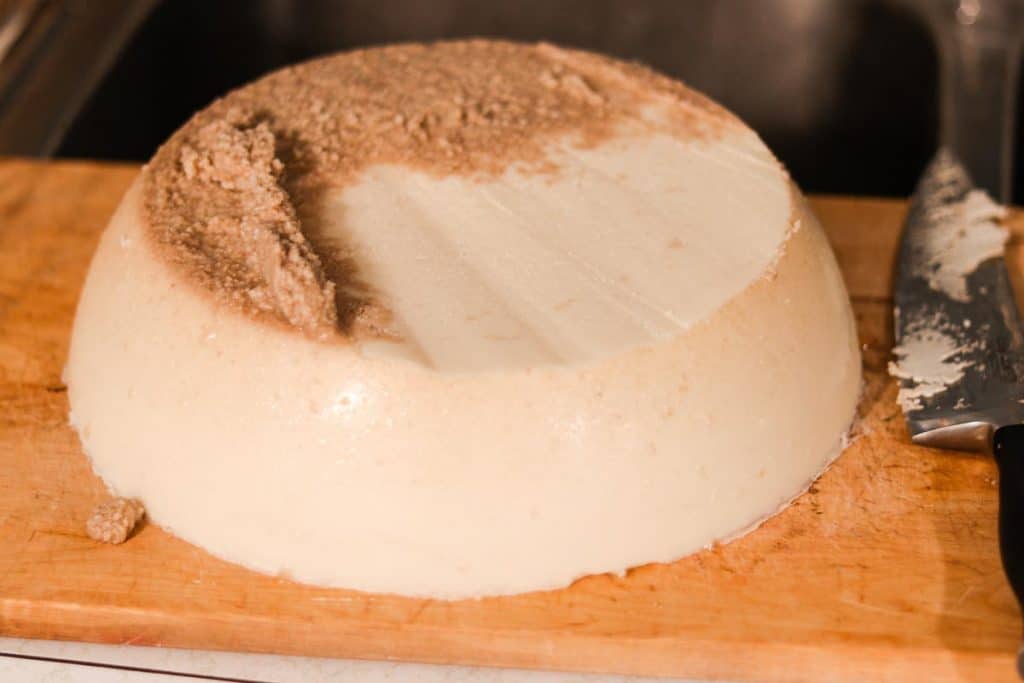
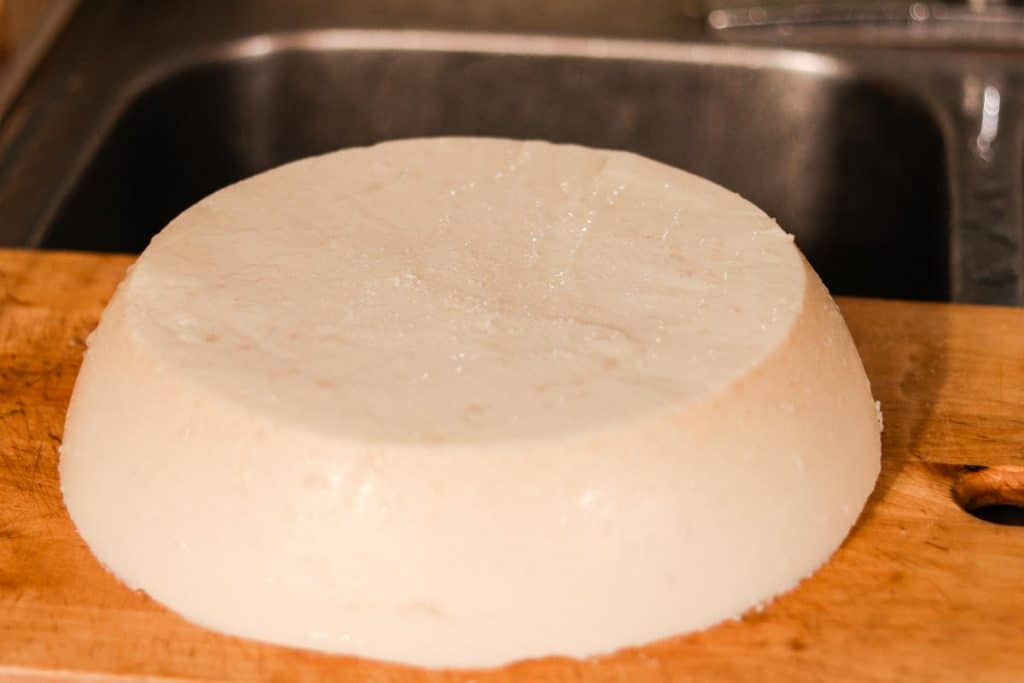
Next, put the tallow back into the crockpot. Add fresh water and salt (the same amount as last time), and set the crockpot to low.
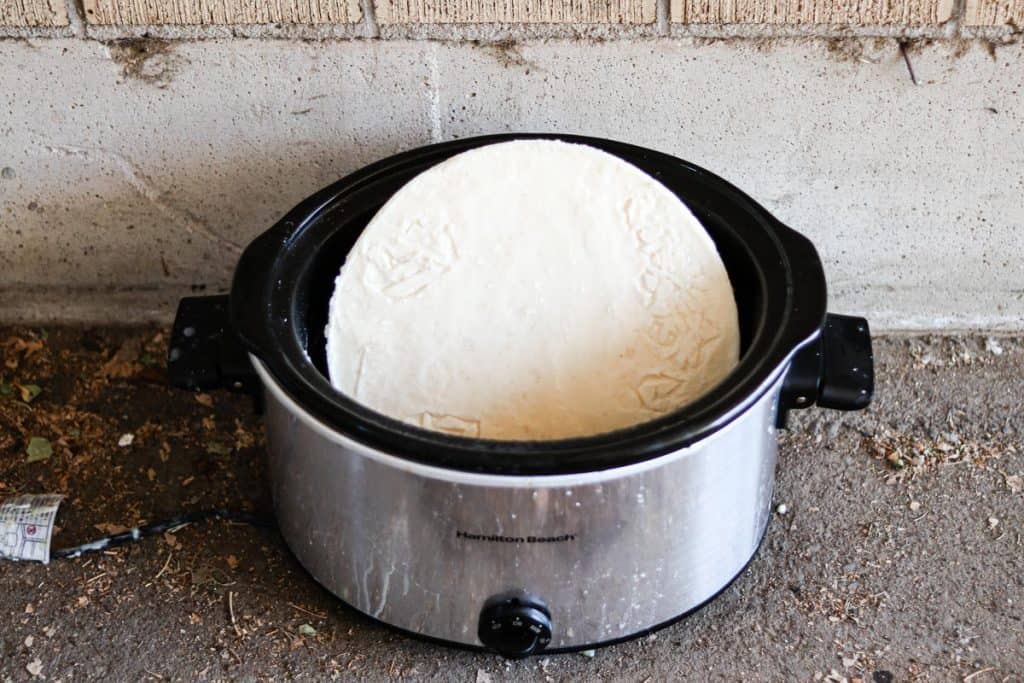
You want the tallow to heat to a simmer, and simmer for about an hour with the water and salt.
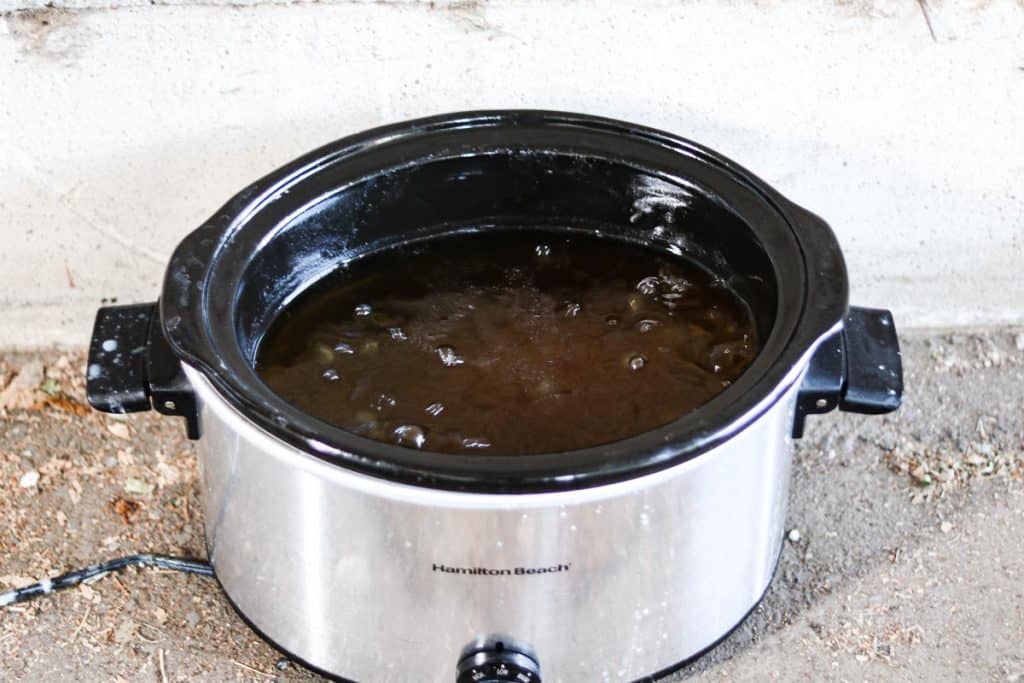
Once that’s done, strain through a metal strainer, this time lined with organic cotton, fine mesh cheesecloth.
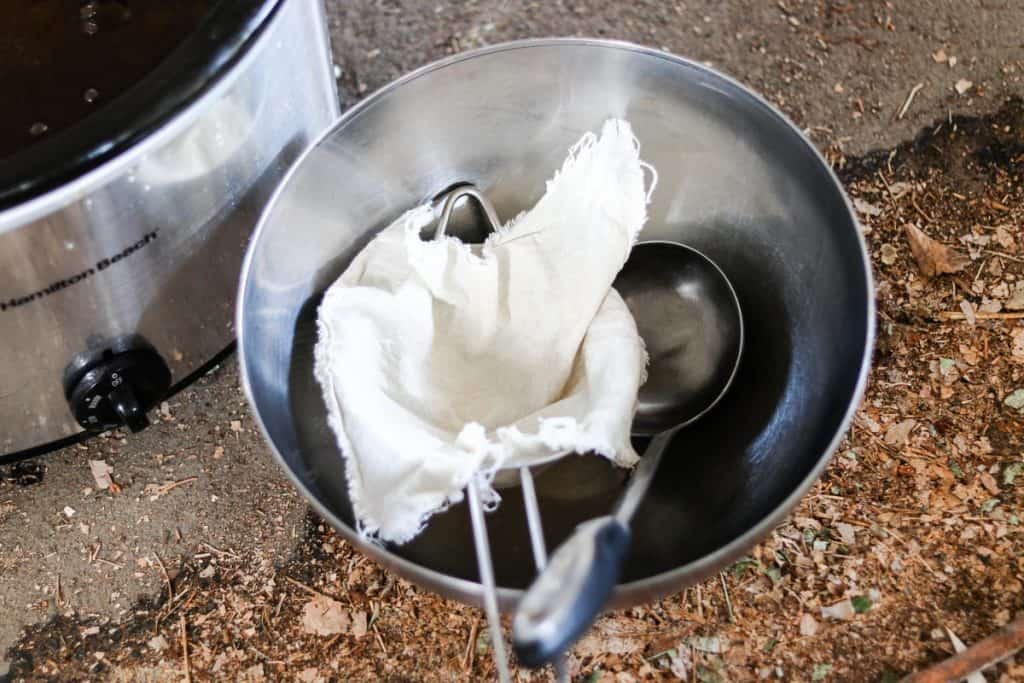
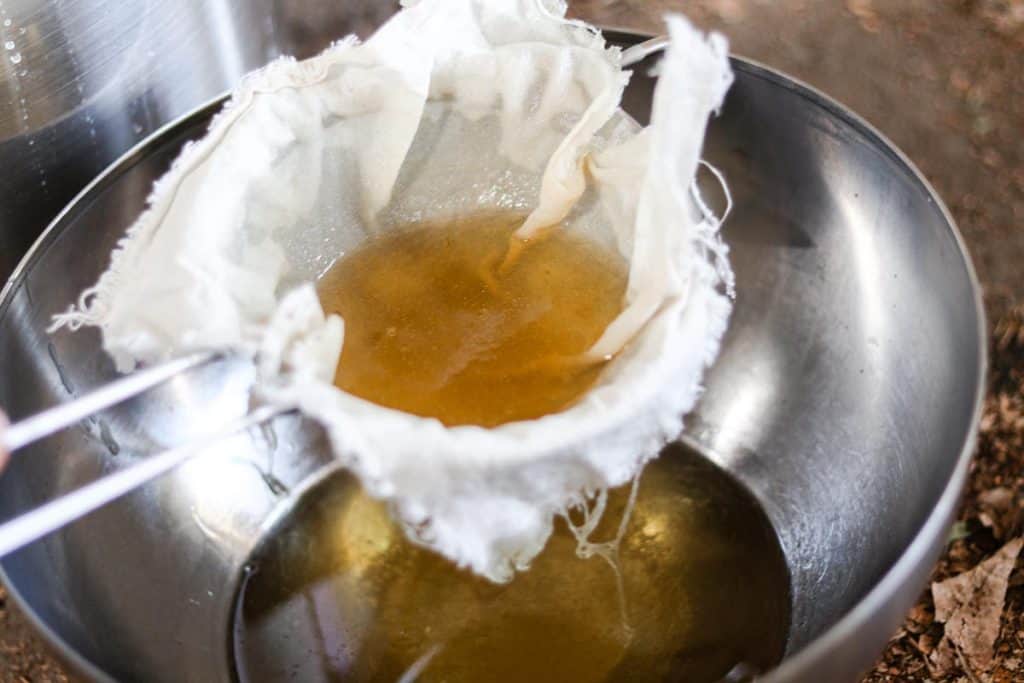
Allow the tallow to harden in a cool place.
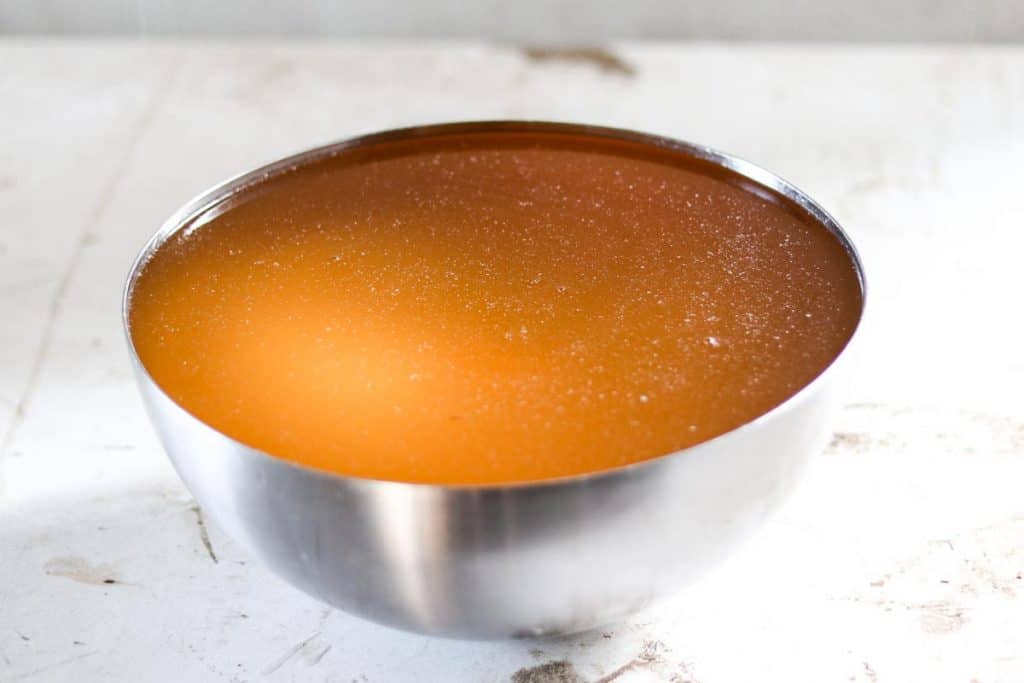

This time, when you pop the hardened tallow out, you’ll notice that the water is much clearer. There will also be much less sediment on the bottom of the tallow cake.

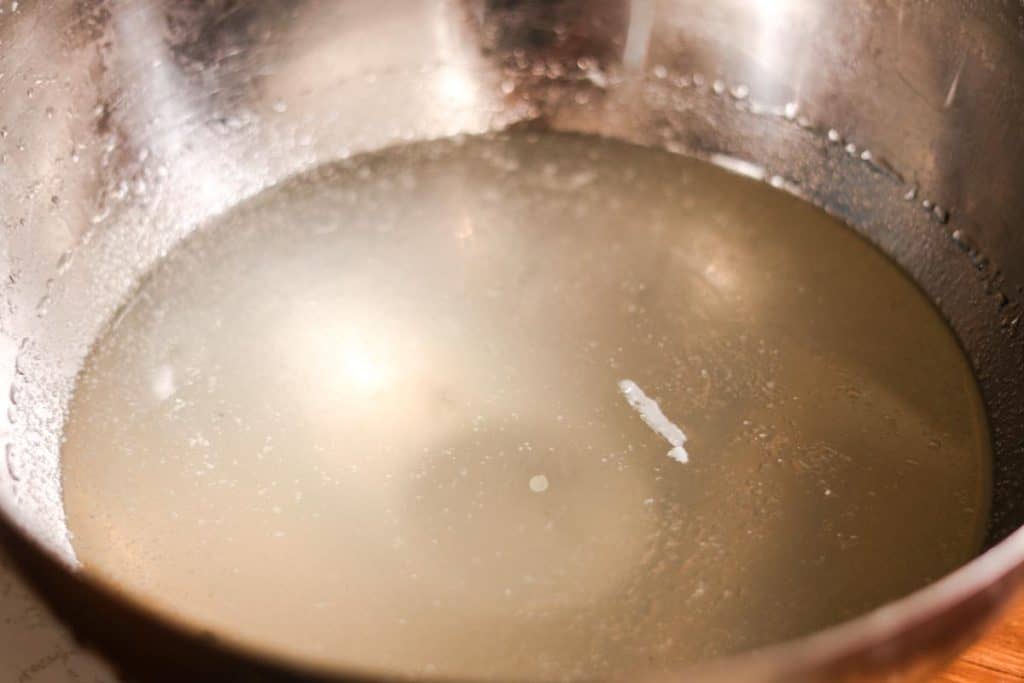
Scrape off any brown places that are there.

At this point, you can either do another purifying step, or just leave the tallow as is. If you use high quality leaf fat, like I do, just the rendering and one purifying process should be good. If you’re using fat from other parts of the animal, you might want to purify it one more time.
After it’s finished with as many purifying steps you want to do, you can either store the tallow in a big cake with plenty of airflow around it. Keep it in the open air so that any remaining water can evaporate, or you may end up with mold.

Or, you can chunk it up, melt it down, and pour it into a storage container. If you choose to melt it and pour it into a storage container, be sure and watch for any remaining water that might settle at the bottom of the melted tallow. Don’t let this water go into the storage container, or the tallow may mold.
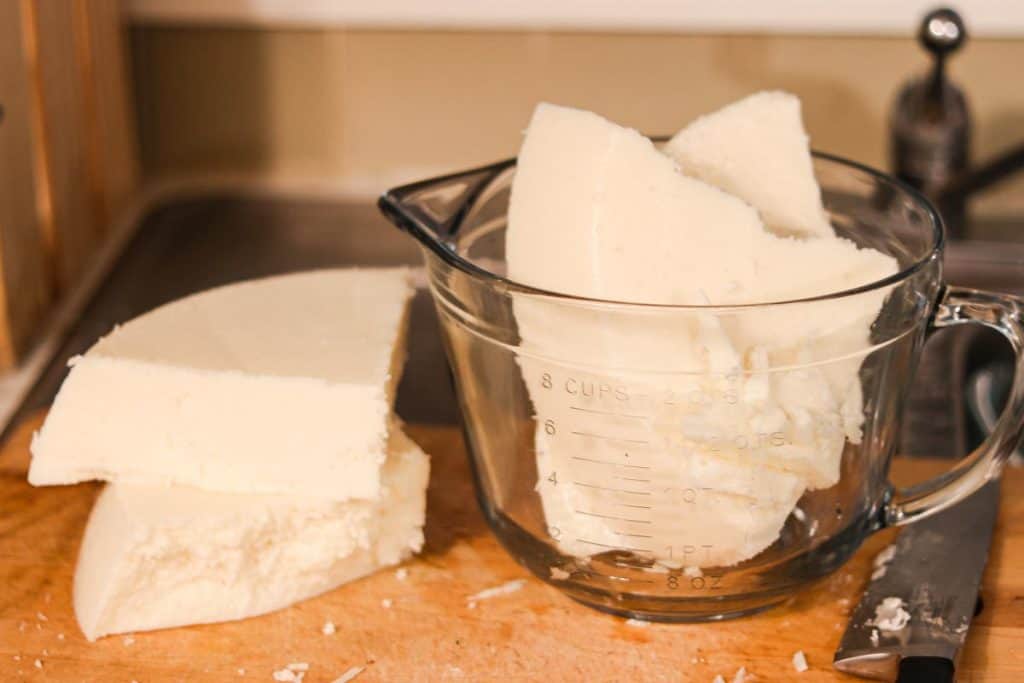
How to render and purify tallow instructions
Ingredients:
- 100% grass fed, grass finished beef fat
- 4-8 cups water
- 2-3 TBSP salt
Instructions:
- Ask butcher to grind beef fat. If this is not an option, grind it in a food processor while it is very cold, or cut it into fine pieces with a knife.
- Put ground or cut up beef fat into crockpot.
- Add salt and water. For a larger amount of fat, use more salt and water. For a smaller amount, use less.
- Turn crockpot to low, and allow beef fat to render for several hours, stirring occasionally.
- When rendering is finished, strain liquid tallow and water into a large bowl.
- Allow tallow and water to cool in refrigerator or other cold place.
- While tallow is cooling, wash crockpot.
- When tallow is very firm, remove tallow cake from bowl and discard water.
- Scrape bottom of tallow cake to remove discoloration.
- Cut tallow cake into quarters and put them into clean crockpot.
- Add same amount of salt and water.
- Turn crockpot to low and bring tallow and water to a simmer.
- Allow to simmer for about an hour.
- Strain tallow and water into large bowl again.
- Allow tallow to cool a second time.
- When tallow is solid, remove tallow from bowl and scrape bottom of tallow cake again to remove any discoloration.
- Store tallow in chunks, or melt tallow in a double boiler and pour into jars for storage, being careful to not get any water into finished tallow.
Tallow Rendering FAQ’s
I’ve gotten a lot of questions about rendering, storing, and using tallow. Here are some commonly asked ones.
What does the water and salt do?
The wet method for rendering tallow helps to prevent burning, which is key in preventing any lingering beef smell in the finished tallow. Using water also helps to keep the heat very consistent.
The salt helps to draw the impurities out of the tallow. It does this both during the rendering and purifying steps. There is no salt left in the finished tallow, as the salt stays in the water that you dump out.
I still use a crockpot to render using the wet method. The crockpot is a great source of even, low heat, which is exactly what you want for rendering fat. You could do this on a stovetop or in the oven, but you’d need to watch it more carefully to make sure it doesn’t get too hot.
How do you store tallow?
Once the tallow is purified to your liking, it’s time to store it. You can either store it in chunks, or melt it down and pour it into jars. If you plan to make soap with it, now is a good time to weigh out the amounts you’ll need for batches of soap.
If you choose to melt the tallow down and pour it into jars, be careful to not get any water in the jars. I like to melt my tallow in a big glass bowl or pitcher in a pan of hot water on the stove. Any water that is left will settle to the bottom of the bowl or pitcher.
As I pour the melted tallow into jars, I’m very careful to leave the drops of water at the bottom of the pitcher, and not let any get into the tallow storage jars. If water gets into the tallow, it could mold.
Properly rendered tallow is quite stable at a cool room temperature. You can keep some for a while on your counter top, if you use it up within a few weeks or so. For a bit longer storage, you can keep it in a cool basement.
If you need to store your tallow long term, like for several months or more, it’s best to refrigerate it or freeze it. It will last for a very long time in the refrigerator or freezer.
How long does tallow last?
Tallow is very shelf stable. It will last at room temp for several weeks, and in the refrigerator or freezer for months or years.
Can you reuse tallow after frying?
Yes! When I cook with it, I make sure to not let my tallow burn. After I’m done using it for frying, I strain it and keep it in the fridge for next time.
How can I get tallow to render more quickly?
Ground fat will render much more quickly and evenly than fat that is left in large hunks. When you buy your beef fat, ask them to grind it for you. If that’s not possible, you can grind it yourself in a food processor, as long as the fat is nice and cold.
Or, you can chop it up finely with a knife. Both of those methods are somewhat labor intensive, though. If you can get the butcher to grind the fat for you, you’ll save yourself a lot of time and effort.
If the butcher where you buy the fat can’t or won’t grind it for you, find another butcher and ask if they’ll do it. That’s actually what I do. I get beef fat from several different farms, and their meat processors don’t usually grind it. Then I take all my packages of frozen fat to my local butcher, and they grind it all for me for a very small fee.
If getting your fat ground is just impossible, I discovered another hack that works really well. Put your big pieces of fat in the crockpot with water and salt. Let it start to render until the fat is nice and soft.
Then, take an immersion blender and whizz the soft fat up with the water until you have a soupy mixture. Let it render for a few hours more, then strain. I find that I can extract a lot more tallow this way, compared to trying to render big chunks of fat.
What temperature does beef fat render?
You want the temperature to be as low as possible. Basically, you want the beef fat to melt without burning.
The low setting of a crockpot works very well for this.
How do you render tallow on the stove?
If you’re doing your rendering on a stovetop, you can follow these same steps using a pot on the stove. Low heat is the best place to be.
How do you render beef fat in the oven?
To render beef fat in the oven, you can follow this same process, using a heavy pot or dutch oven with a lid. Again, keep the temperature very low. I wouldn’t go higher than 220ºF.
What is beef suet?
You might be confused about what is tallow verses suet. Suet is just another name for tallow. Sometimes people use the term suet to refer to the highest quality beef fat, which is the fat that surrounds the kidneys and other internal organs.
This fat around the internal organs is also called leaf fat. Whatever you want to call it, the fat around the internal organs is the highest quality fat. It is hard and smooth, and contains the richest concentration of beneficial nutrients.
What is the difference between tallow vs. lard?
If you’re new to tallow, you might be a little confused on the difference between lard and tallow. I give the complete comparison between tallow and lard here.
In short, tallow is rendered fat from ruminant animals, like cattle and sheep, while lard is rendered pork fat. Both are great for various uses. Lard makes delicious pastries and pie crusts, since it is very mild in flavor.
Lard from free range pork is high in vitamin D. Between the two fats, tallow is my favorite. This is because tallow from grass fed cattle contains not only vitamin D, but also vitamins A, D, E, K, minerals, anti inflammatory conjugated linoleic acid, and lots more.
You can use this same method, or the dry crockpot method to render lard, just like you render tallow.
Where can I buy tallow?
Sometimes, you just want a quick, non messy option. Or make you can’t quite find raw beef fat yet. Whatever the case, this high quality tallow from organic, 100% grass fed beef is what I recommend as a very good option. You can use it either for cooking or skincare.
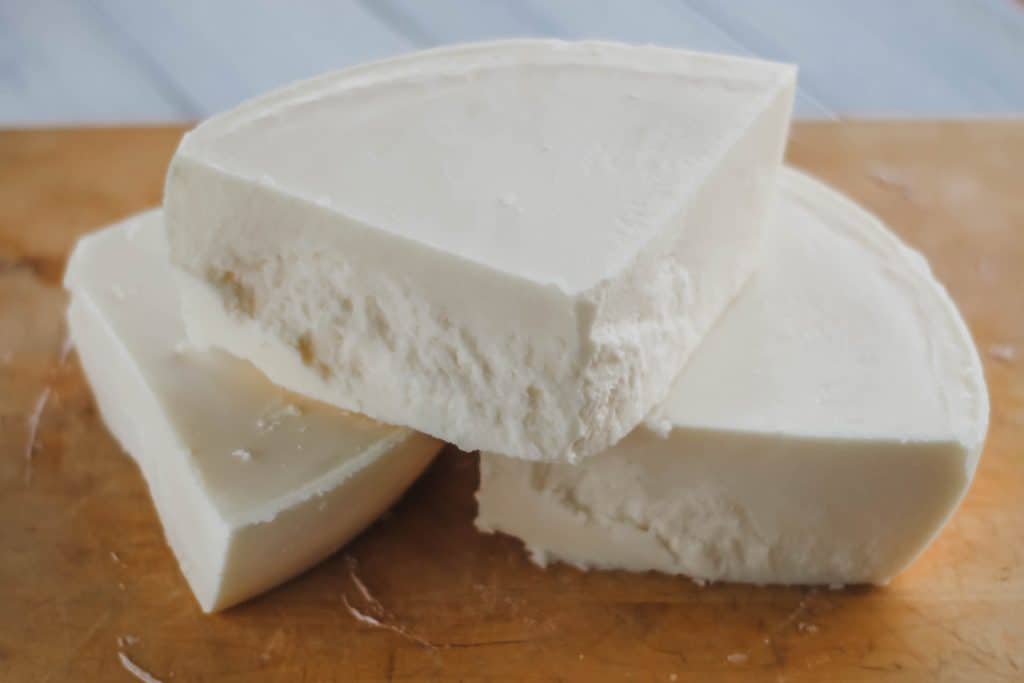
Grass fed tallow recipes and information
Reasons why skin loves grass fed tallow
Tinted lip balm recipe with tallow and honey
Diaper rash cream with tallow and clay
Have you rendered your own tallow before?
What did you make with it? Share in the comments!
Join our traditional wisdom community, and get exclusive access to my online resource library, where every free eBook I’ve made is in one spot!
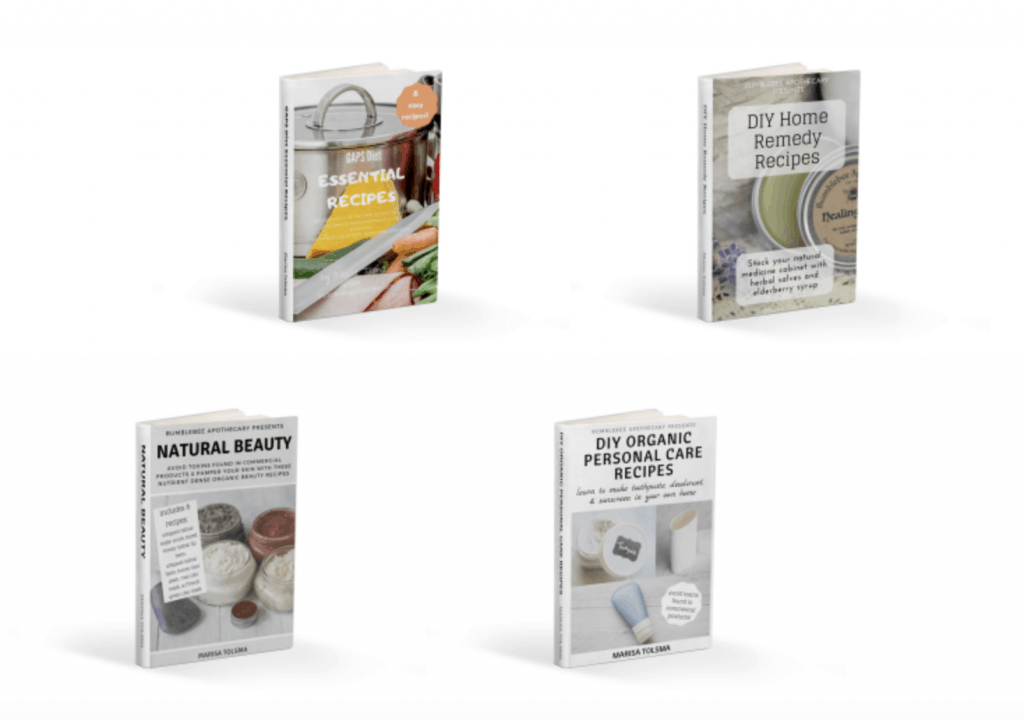
Shop this post
Organic, 100% grass fed beef tallow
Want to pick up a handmade tallow balm, tallow soap, or tallow shampoo bar?
Check out the Bumblebee Apothecary Shop here.

Or try it first with my free workshop →
Follow along with Bumblebee Apothecary
Thanks for stopping by! Be well!
If you make this recipe and love it, please give it 5 stars! Also, tag me on Instagram @bumblebeeapothecary
How to Render and Purify Tallow
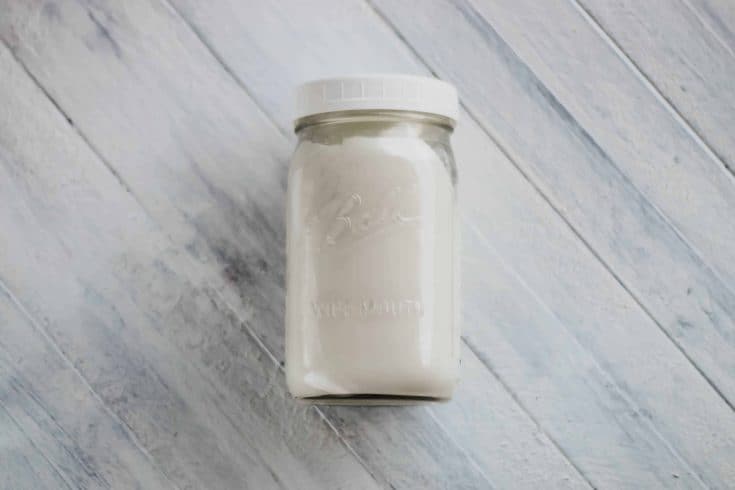
This is the ultimate guide to rendering the best tallow ever. Nutrient dense, versatile... tallow is amazing stuff. This is my method for how to render and purify tallow so that it is odorless and white.
Ingredients
- 100% grass fed, grass finished beef fat
- 4-8 cups water
- 2-3 tbsp salt
Instructions
- Ask butcher to grind beef fat. If this is not an option, grind it in a food processor while it is very cold, or cut it into fine pieces with a knife.
- Put ground or cut up beef fat into crockpot.
- Add salt and water. For a larger amount of fat, use more salt and water. For a smaller amount, use less.
- Turn crockpot to low, and allow beef fat to render for several hours, stirring occasionally.
- When rendering is finished, strain liquid tallow and water into a large bowl.
- Allow tallow and water to cool in refrigerator or other cold place.
- While tallow is cooling, wash crockpot.
- When tallow is very firm, remove tallow cake from bowl and discard water.
- Scrape bottom of tallow cake to remove discoloration.
- Cut tallow cake into quarters and put them into clean crockpot.
- Add same amount of salt and water.
- Turn crockpot to low and bring tallow and water to a simmer.
- Allow to simmer for about an hour.
- Strain tallow and water into large bowl again.
- Allow tallow to cool a second time.
- When tallow is solid, remove tallow from bowl and scrape bottom of tallow cake again to remove any discoloration.
- Store tallow in chunks, or melt tallow in a double boiler and pour into jars for storage, being careful to not get any water into finished tallow.
Recommended Products
As an Amazon Associate and member of other affiliate programs, I earn from qualifying purchases.

